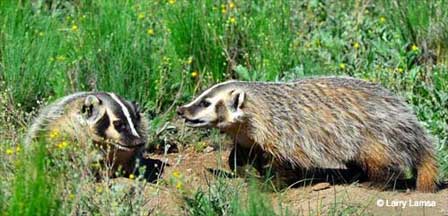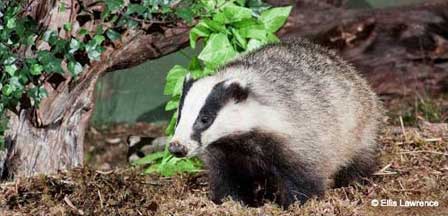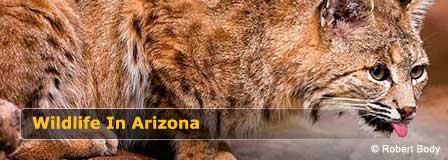Arizona Badger
A badger can be ferocious. They are rarely seen near developed areas, preferring mostly a solitary life in back country areas, so people encounters are also rare. If they detect humans in their area, they prefer to avoid contact and will scurry-off in the opposite direction or return to their den. But, if confronted they will often make a charge to scare an intruder away. They will hiss, growl and stand tall. If there is no choice, they will fight when cornered. This is an animal that you do not want to intimidate or harass. Consider yourself lucky if you see a badger in the wild, but just observe it and do not try to catch it or pick it up. If you do not bother it, it will likely not bother you.

Badger Characteristics and Habitat
There are several species of badgers. They exist in most states and share the same ferocious appearance with subtle physical differences among the species. In Arizona, adult badgers weigh between 10 to 20 pounds and are about 20 inches long not counting its 5 inch tail. They reside anywhere in the state that is remote and where a hole can be dug. They are stocky animals with bodies that are relatively flat. They have loose hide, very muscular bodies, a broad head with a short, thick neck, short legs, a bushy tail and long, sharp claws designed for digging. The badger's colorization is silver-gray fur, black feet, a black patch on each cheek, and a white stripe that extends from its nose to over the top of its head.
Badgers belong to the weasel family. They are carnivorous and are mostly nocturnal doing most of their hunting at night. Badgers dig deep burrows in the ground that become home. A safe harbor from predators, sleeping place during the day and a den for their offspring. A male badger is called a "boar", a female is a "sow" and the young are called "cubs". Badger colonies are called "clans" and their dens are called "setts".

Badgers do not actually hibernate. But during the winter they do become inactive and will stay in their dens for up to a month without hunting. Badgers are solitary animals that stake territories of about one badger per square mile. Since they hunt burrowing animals, they choose habitat areas that are rich in prey.
Mating generally begins in late summer or early fall. Female badgers can mate at four months old, while the male is not capable of mating until the fall season of their second year of life. Litters are born in early spring and average 1 to 5 cubs in a litter.
Badger Predators and Prey
Badgers are prey to larger predators including mountain lions and bears. A coyote can kill a young badger but will generally avoid the ferocious adult. Eagles sometimes will scoop-up a very young cub. A badger does not stalk its prey. Instead it digs into its burrows with its long claws. It is a digging machine. They feed mostly on burrowing rodents such as ground squirrels, gophers and prairie dogs. They will also eat snakes and lizards.
High Desert Badger Video
Arizona Animals















